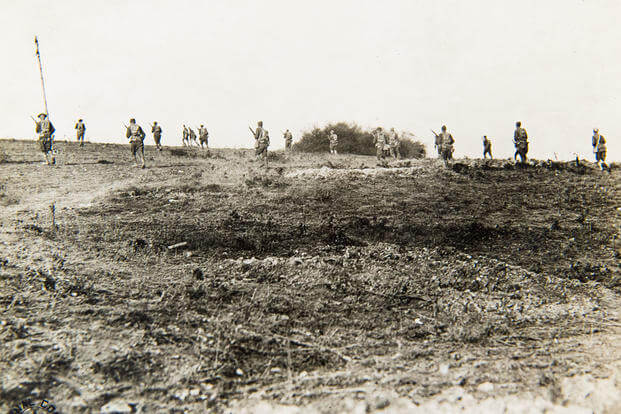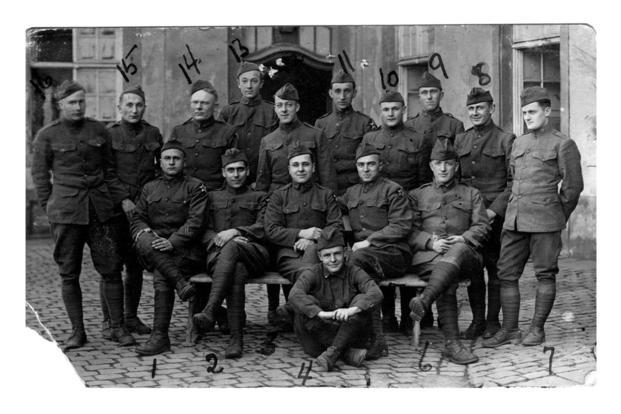"The lamps are going out all over Europe. We shall not see them lit again in our lifetime."
–Sir Edward Grey, British Foreign Minister, August 1, 1914
The events leading up to the First World War, and its subsequent execution, have produced a voluminous literature. Approximately 40,000 books have been written in the English language on the subject, some multi-volume tomes. Add the foreign language contribution and the number grows even larger. The "causes" of the war invariably figure prominently in the historical literature, with a recurring theme being the question of "blame." At first glance cause and blame might appear to be the same thing. It is not. Blame means a tort. Blame goes beyond cause. Implicit in the idea of blame is a responsibility and an obligation to make amends.
Who was to blame for the First World War? The history books offer us no shortage of candidates. It was the arrogance and belligerence of Kaiser Wilhelm, the stubbornness of the Austrian government, it was Russia's unwillingness to back down in its support of Serbia. It was Berlin's refusal to pressure Vienna to moderate its demands, France's refusal to rein in its Russian ally. It was Great Britain's lack of forcefulness in dealing with Germany. It was the "generals," intent on going to war. It was the very process of mobilization; a process that once started could not be stopped until the bloodletting was inevitable.
It was the industrialists hungry for the profits that building the machines of war would bring them. It was the cobweb of alliances and treaties that robbed the European powers of diplomatic flexibility, forcing them to march in unison over the cliff face of war. It was the age-old lust for empire. The list seems endless, as each generation of historical revisionists find yet another slate of candidates on which to pin blame. Ironically, the one person who rarely is held responsible is Gavrilo Princip, the teenager whose actions on that summer day in Sarajevo precipitated the avalanche of war.

The question of blame was more than an issue of historical interest. The war was incomprehensibly expensive. German reparations for civilian damages were originally estimated by the allied powers at 269 billion gold marks. In the Treaty of Versailles, damages were set at 132 billion gold marks. Only 50 billion of that was expected to be paid, the so-called Schedule A and Schedule B obligations. The balance, listed separately on Schedule C, was never intended to be collected on and was included strictly for public consumption. In 2013 dollars, 269 billion gold marks would represent a sum of approximately seven trillion dollars. Moreover, that sum only reflected the damage done to civilian property on the Western Front. Additionally, the value had been set based on the Allies' assessment of Germany's ability to pay–an amount that was progressively reduced.
The fact is no one really knew what the total value of the damage to civilian property was. Those numbers did not take into consideration the cost of prosecuting the war by the allies. Nor did it take into consideration the cost of civilian damages on the Eastern Front, nor the costs to Germany, Austria-Hungary, Turkey or Russia, not to mention the smaller powers, of fighting the war as well. Finally, there was no way of quantifying the "value" of the staggering loss of life nor the continuing costs of caring for the wounded and maimed.
The "cost" of World War I is a highly subjective measure. The total cost of fighting the war by all sides has been placed at $186 billion. Another $151 billion is attributed to indirect costs, including the damage to civilian property. These figures are often cited, although it is not clear how they were determined. The total of $337 billion converted to twenty-first century dollars, depending on the conversion rate used, would place the cost in current dollars between $17 trillion and $35 trillion. In reality, we will never really know what the total cost of the war actually was. Regardless of the number used, it was a staggering amount.
It is a truism of military conflict that the victor writes the history. Given the frightful cost of the war, and the determination of the winners to recover as much of the cost of fighting as possible, it was a forgone conclusion that the loser would have to acknowledge culpability for "causing" the war -- a fact amply well documented in historical accounts, especially those written by British and French writers.
The undue emphasis on blame, and therefore culpability, led to a bias toward identifying a single cause. It is easier to assess damages when there is only one guilty party. Multiple defendants meant varying degrees of culpability and responsibility, and made it correspondingly harder to fix damages on each of the parties in question. This was manifestly clear at the Versailles Peace Conference where the payment for "war guilt" was placed entirely on Germany, even though it had been Austria that had issued the first declaration of war and triggered the various mutual support provisions that tied the members of the two alliances together.
History in general, and military history in particular, lends itself readily to a discussion of the "what ifs." Any suggestion of blame, especially when that blame is primarily fixed on a single cause, must perforce beg the question "what if" that particular party had acted differently? Under what conditions might war have been avoided? Would a different set of decisions have yielded a vastly different outcome?
This essay marks the beginning of a new series on World War I. I will examine three events: the formation of the alliances that ultimately went to war; the assassination of the Archduke Ferdinand and his wife Sophia in Sarajevo and the "July Crisis" that followed; and Germany's decision to attack France first (Schlieffen Plan), which had a profound impact on the nature and scope of World War I. All three events could easily have evolved differently; indeed, historical precedent would have suggested that the final outcomes had been anomalous.
The events that led to the outbreak of World War I, and the range of actors involved, were far too complex to be reduced to a single cause, that does not mean, however, that a different set of decisions would not have yielded a different result. The calculus that spawned the war was the product of the interaction of a broad range of variables. Even slight changes in any one of them might have affected the outcome in ways we can't always surmise. There is a huge number, perhaps an infinite number, of possible scenarios. The road that led to war had many exits along the way; any one of which would have averted the catastrophe, or at the very least reduced the scope of the destruction. In the end, tragically, none of those exits were taken.
Joseph V. Micallef is a military historian, bestselling author, keynote speaker, syndicated columnist and commentator on international politics and the future.
Want to Know More About the Military?
Be sure to get the latest news about the U.S. military, as well as critical info about how to join and all the benefits of service. Subscribe to Military.com and receive customized updates delivered straight to your inbox.














